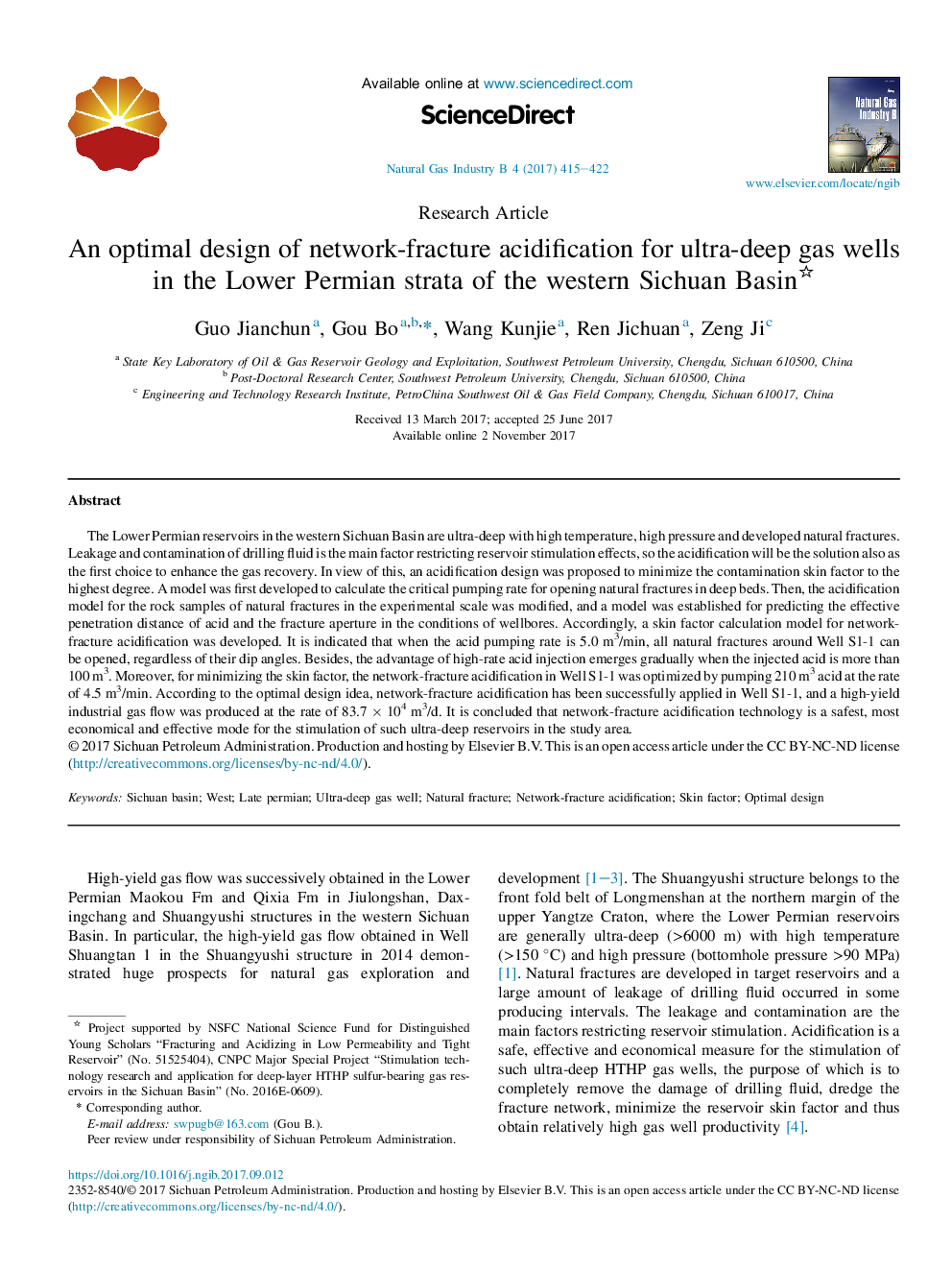| Article ID | Journal | Published Year | Pages | File Type |
|---|---|---|---|---|
| 8109624 | Natural Gas Industry B | 2017 | 8 Pages |
Abstract
The Lower Permian reservoirs in the western Sichuan Basin are ultra-deep with high temperature, high pressure and developed natural fractures. Leakage and contamination of drilling fluid is the main factor restricting reservoir stimulation effects, so the acidification will be the solution also as the first choice to enhance the gas recovery. In view of this, an acidification design was proposed to minimize the contamination skin factor to the highest degree. A model was first developed to calculate the critical pumping rate for opening natural fractures in deep beds. Then, the acidification model for the rock samples of natural fractures in the experimental scale was modified, and a model was established for predicting the effective penetration distance of acid and the fracture aperture in the conditions of wellbores. Accordingly, a skin factor calculation model for network-fracture acidification was developed. It is indicated that when the acid pumping rate is 5.0Â m3/min, all natural fractures around Well S1-1 can be opened, regardless of their dip angles. Besides, the advantage of high-rate acid injection emerges gradually when the injected acid is more than 100Â m3. Moreover, for minimizing the skin factor, the network-fracture acidification in Well S1-1 was optimized by pumping 210Â m3 acid at the rate of 4.5Â m3/min. According to the optimal design idea, network-fracture acidification has been successfully applied in Well S1-1, and a high-yield industrial gas flow was produced at the rate of 83.7Â ÃÂ 104Â m3/d. It is concluded that network-fracture acidification technology is a safest, most economical and effective mode for the stimulation of such ultra-deep reservoirs in the study area.
Related Topics
Physical Sciences and Engineering
Energy
Energy Engineering and Power Technology
Authors
Jianchun Guo, Bo Gou, Kunjie Wang, Jichuan Ren, Ji Zeng,
